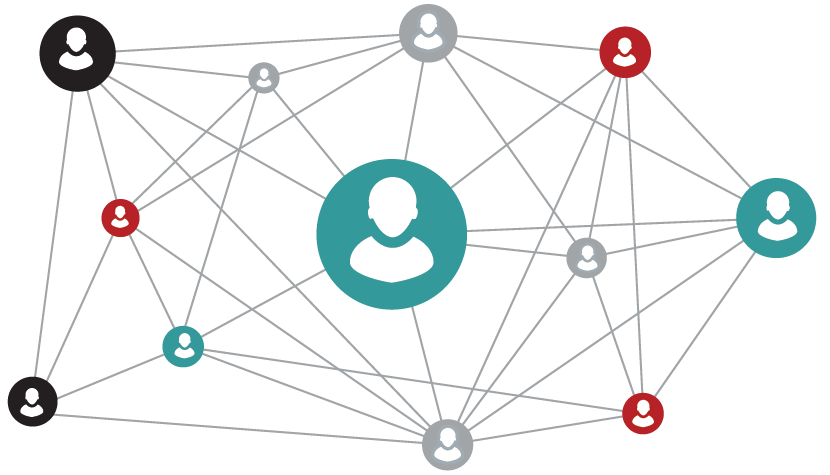
Over the last month, we have hosted four peer learning dialogues that convened leaders, practitioners, scientists, and thinkers to share challenges and insights on the current social justice uprising. We have noticed several trends. A month ago, we saw an outpouring of anger, grief, and a sense of urgency to act. The last few weeks were characterized by a flurry of activity to support Black employees, communicate both internally and externally a commitment to organizational change, and taking time to reflect on the history of racism in the US and how to sustainably prioritize racial equity within businesses. A common thread over the month has been a shared worry among White employees and leaders over doing something “wrong,” and how that worry can impede action.
This week, HR professionals feel thrust into the spotlight and inundated with demands. Some leaders are seeking coaching; others are fearfully shying away from the dialogue. While there is variation in how companies are meeting this historic moment, overall, the cultural tone has made a seismic shift towards hope, transparency, and action over reaction with more companies than ever before taking action to meaningfully move the needle on equity, diversity, and inclusion within their own four walls. The last month has awakened companies to the inextricable links between the business and race, equity, and inclusion—change is upon us.
WHAT WE ARE HEARING
Here is what we are hearing about what’s happening in our organizations right now.
IMPORTANCE OF BIPOC ERGs Smaller organizations are creating BIPOC (Black, Indigenous, people of color) employee resource groups (ERGs), recognizing the importance of providing BIPOC employees with a safe space to share their unique experiences and raise the profile of their collective voice.
BIPOC LEADERS ARE SUFFERING People leaders of color have been working tirelessly to support their employees during this time of crisis, but they face unique challenges. Some point out the difficulty in separating their race from their professional “self”: “As a top BIPOC leader it’s hard to separate myself from my role as leader, HR practitioner.”
WHITE FEAR OF FUMBLING White colleagues and leaders report that they want to learn how to engage in the Black Lives Matter dialogue and move forward, yet their fear of fumbling—of doing or saying the wrong thing—is impeding action.
NEW LANGUAGE More White people are willing to candidly discuss race and racism on the workfloor—something that was often avoided in the past because of the discomfort it can create. A new language zeitgeist has emerged and become integrated into our everyday work conversations—structuralized racism, institutional racism, white privilege, white supremacy, white fragility, racial equity, social justice, anti-racism. While many are feeling more comfortable using these terms, many are still uncertain about their true meaning.
SPOTLIGHT ON HR LEADERS HR leaders are under water. Whereas before their I&D activities often happened in the background, now employees are suddenly looking to them for answers and action. One HR leader said, “We are feeling immense pressure – now we are all of a sudden thrust into the spotlight with everyone demanding answers and actions – our team is 1.5 people – it’s just too much – we’re inundated.”
WHAT IS HAPPENING
Here’s what organizations across the country are doing right now.
START REFORM AT THE TOP Companies—and leaders themselves—now recognize that education on racism and bias is not just something that managers and individual contributors need to have; many leaders are requesting training and coaching to guide them and their team into taking meaningful action.
GOING PUBLIC WITH DEMOGRAPHICS Some organizations are now, for the first time, publicly sharing their company demographics. Others also published workforce diversity goals. These acts of transparency are leading-edge commitments to change.
PAST, PRESENT, FUTURE COMPANY-WIDE DIALOGUE Companies organized educational events around Juneteenth last week, and some did so as part of new company-wide dialogue and learning series that raises awareness around the Black history (past), understanding structuralized racism and the current state of I&D within the company (present), and dialogue about next steps for I&D (future).
DISTINCTION BETWEEN ERGs & AFFINITY GROUPS People leaders are drawing the distinction between ERGs and affinity groups. ERGs are identity-related or functionally relevant groups that convene in a safe space to discuss their unique experiences, provide peer support, and inform I&D and business strategy (e.g., Black employees, Parents, LGBTQ+). Affinity groups, on the other hand, are social groups that convene to share interests, hobbies, and activities inside and outside of work (e.g., biking club, cooking club). One leader said, “Language is powerful. We are calling our new BIPOC group an ERG and the running group a club. The ERGs will have voice and influence, the clubs will not.”
OPEN QUESTIONS WE ARE HEARING
- How do we engage White colleagues who are afraid of “fumbling” conversations about race and racism?
- How do we educate effectively around white privilege so that White employees can understand that their challenges have been different from the challenges encountered by their Black colleagues?
- How do we make sure that BIPOC employees and ERGs have the organizational voice and influence they deserve without creating the expectation that they need to be the ones responsible for the added labor to drive solutions?
TAKING CONTINUED ACTION
We at Forshay are committed to sharing what we learn, as we learn it. We are committed to convening passionate leaders, leading edge researchers/scientists, and innovative diversity and inclusion practitioners to share insights and actions. We invite you to join the conversation. Contact us at info@forshay.com.






